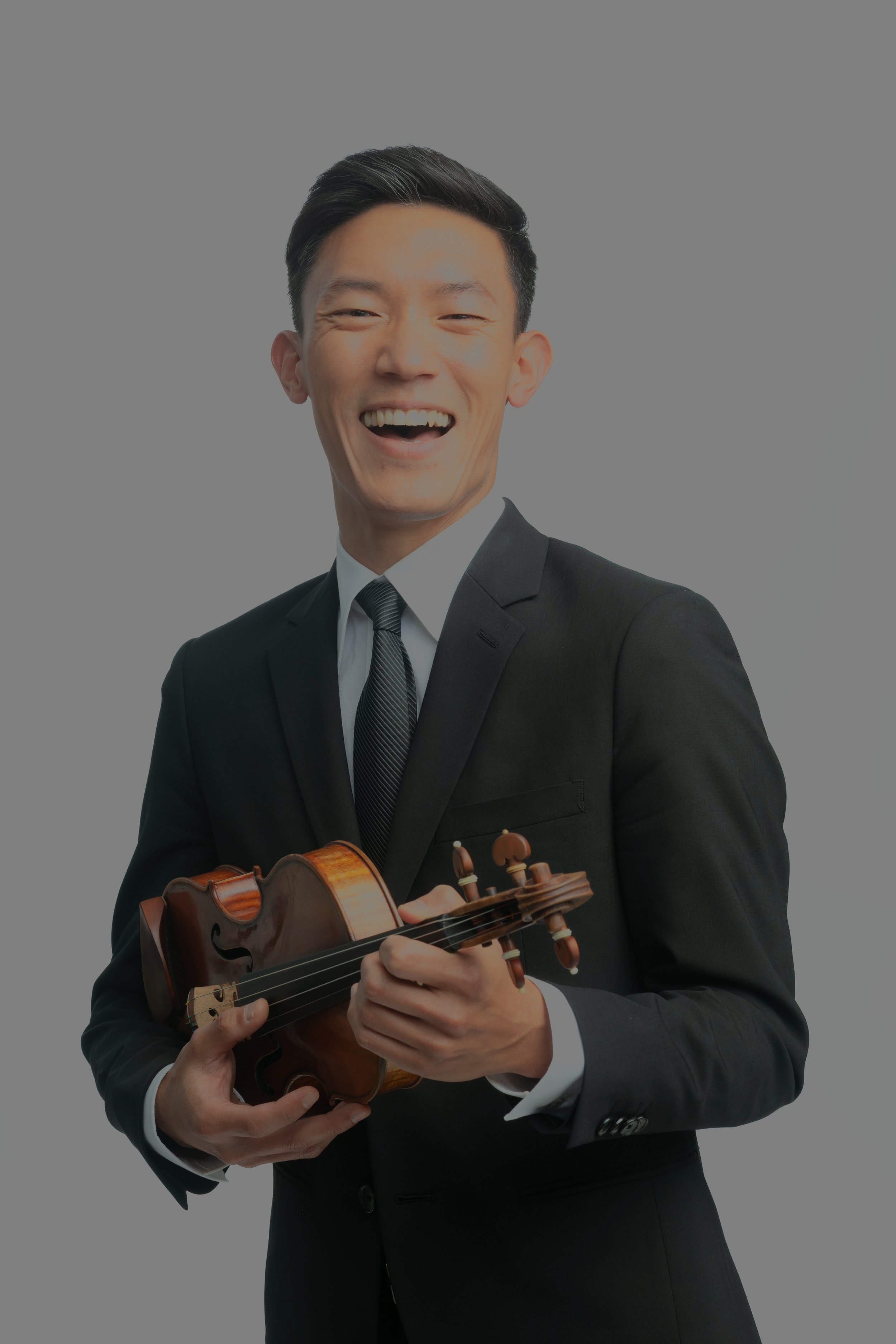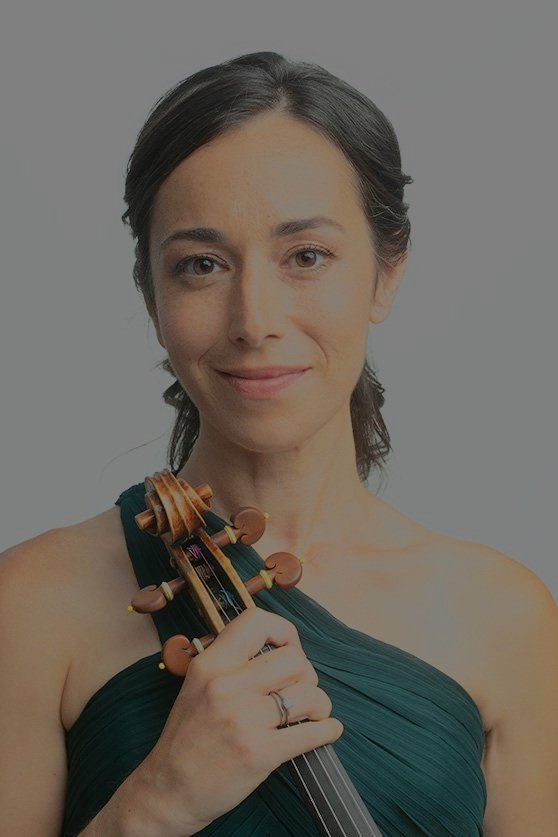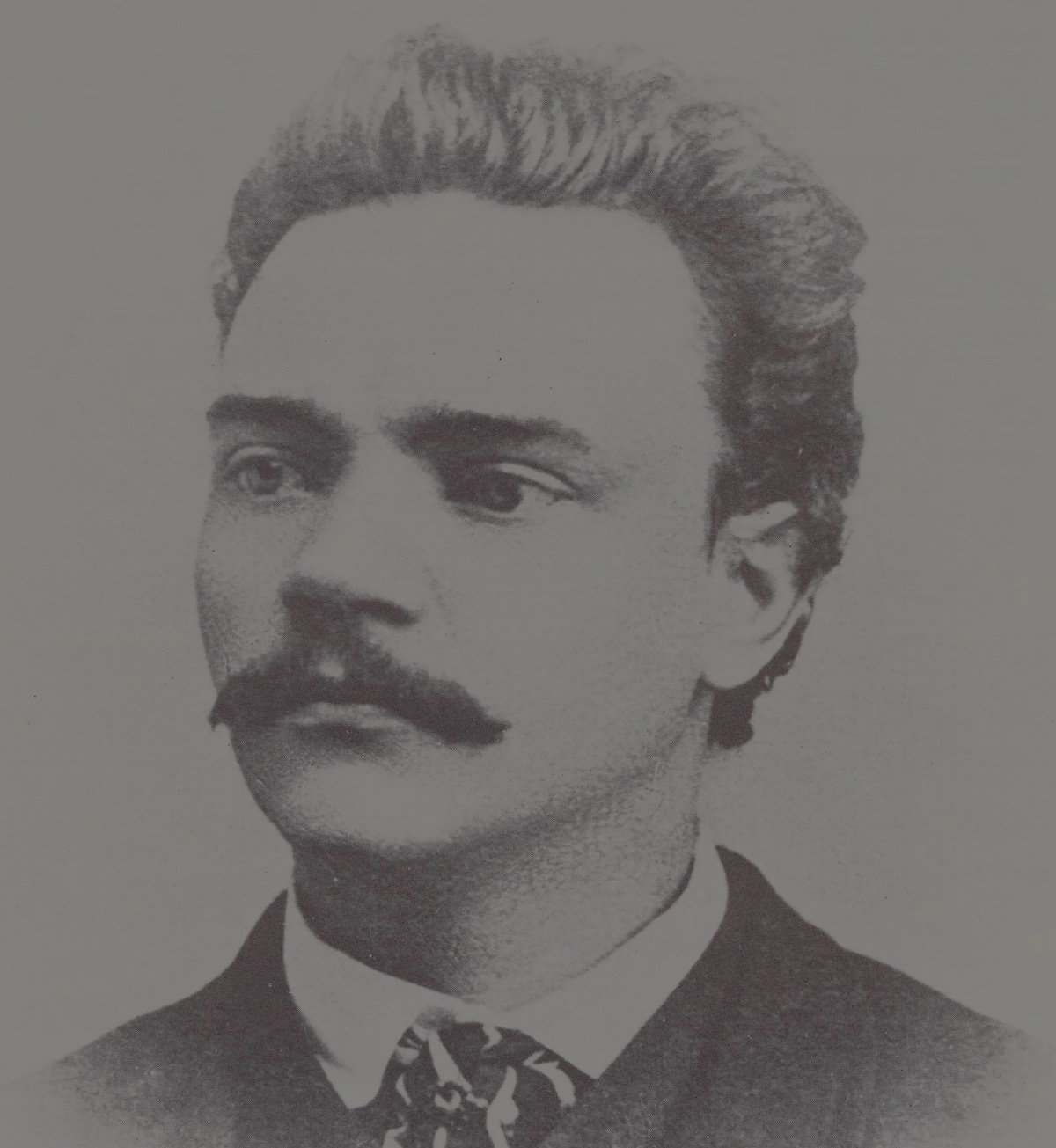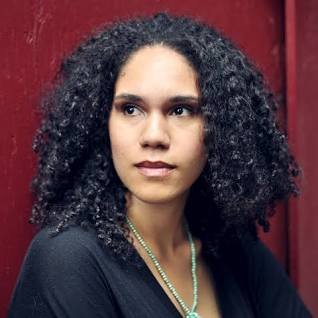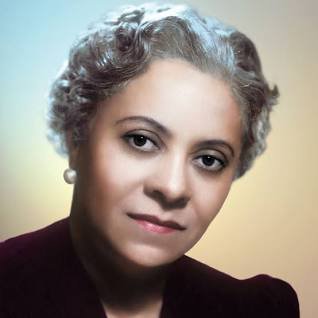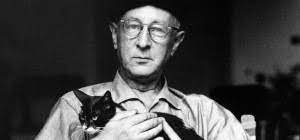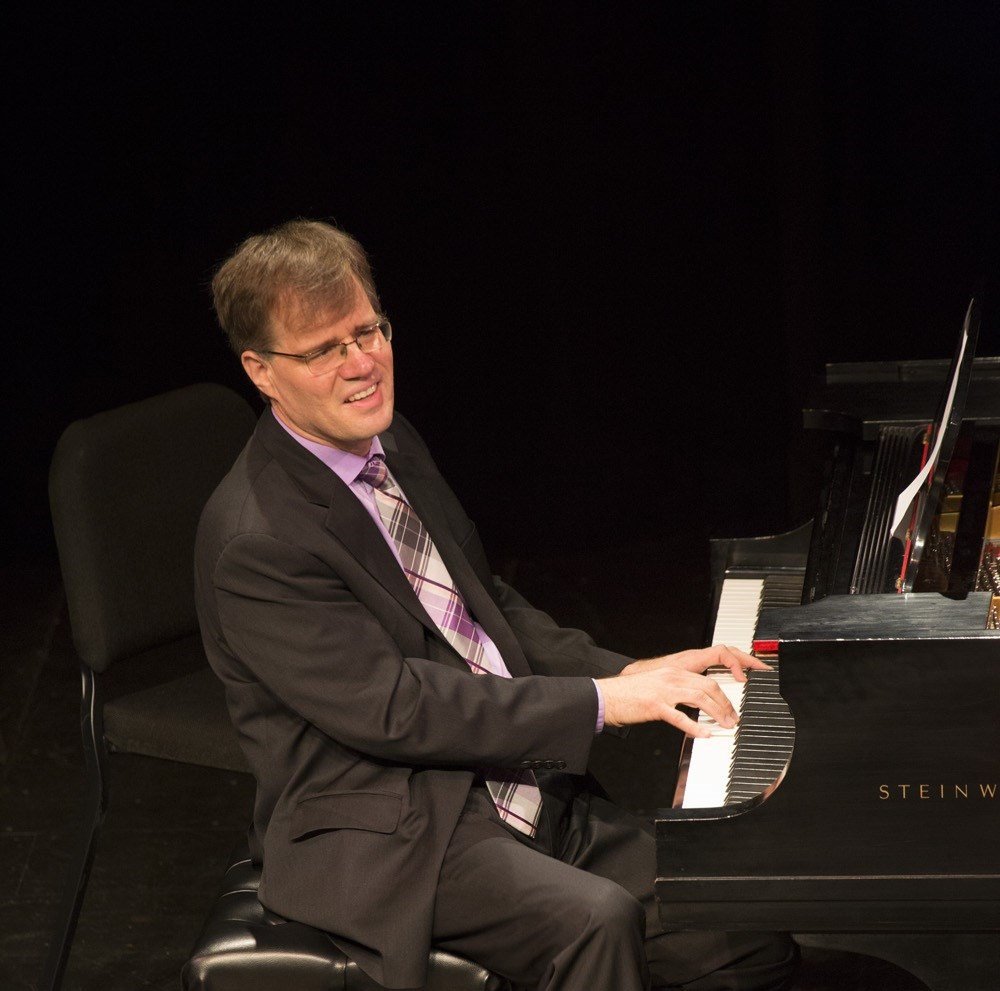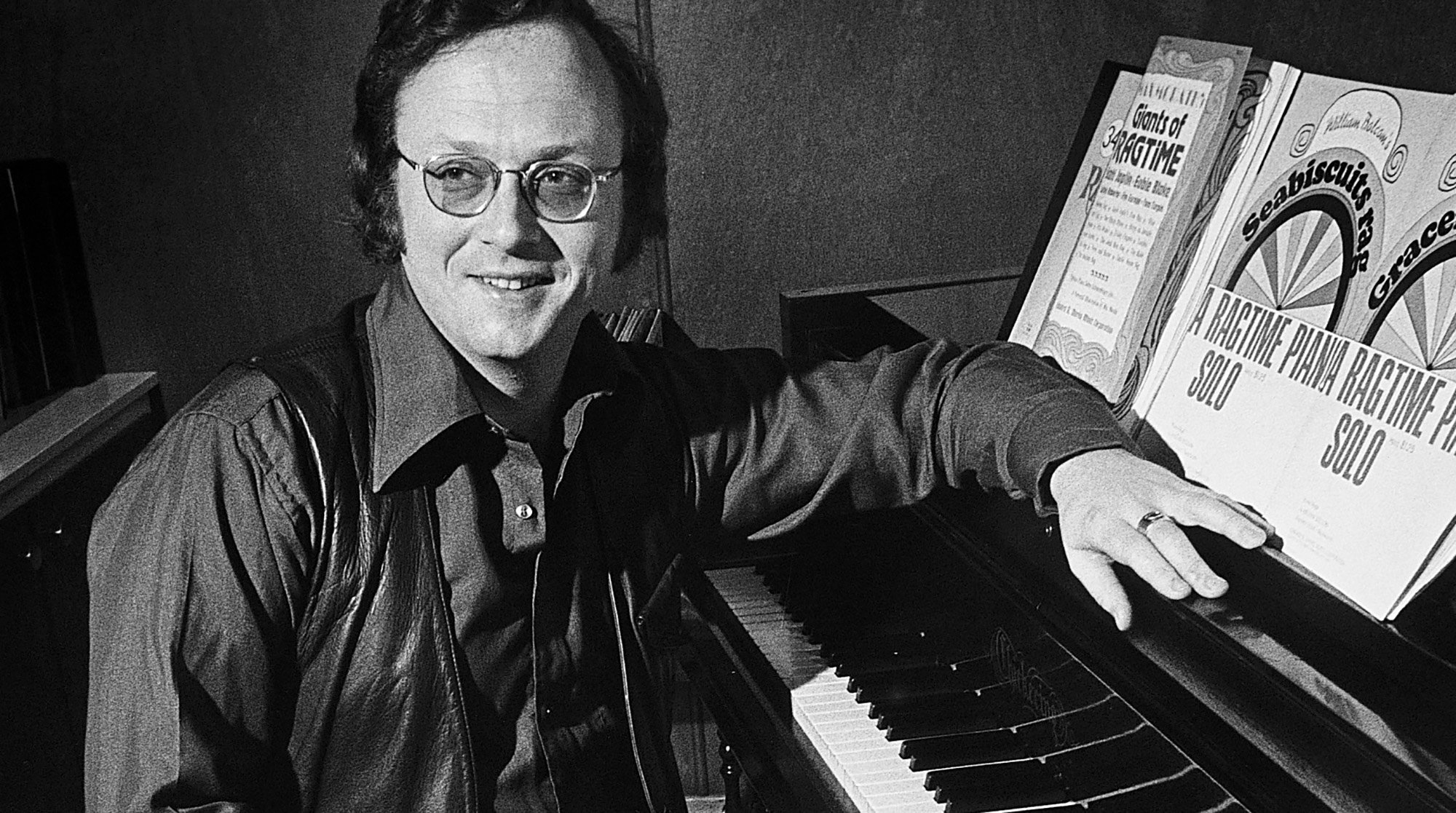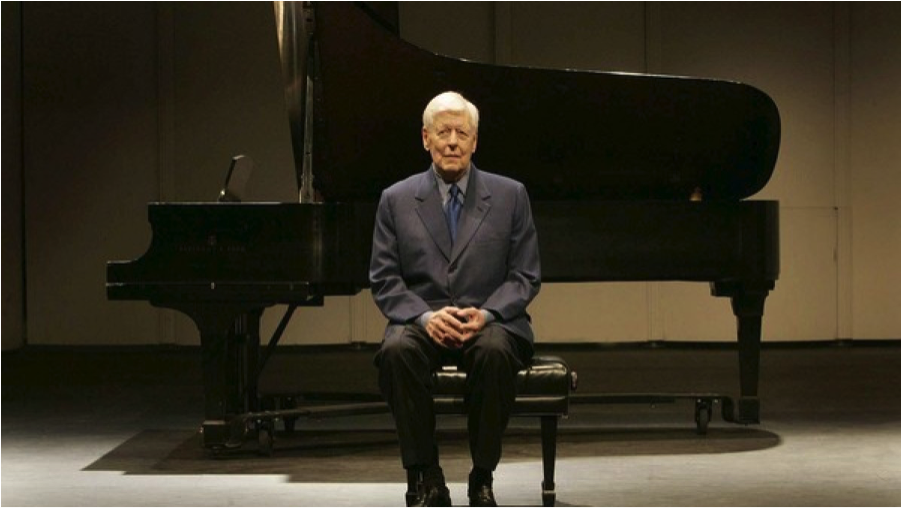Agarita is honored to collaborate with violinist Daniel Chong and violist Jessica Bodner of the Grammy-winning Parker String Quartet for a program inspired by American folk music. While it only scratches the surface, the incredible variety of musical styles on this program is a testament to America’s diversity and influences.
Featuring
Daniel Chong
GRAMMY Award-winning violinist Daniel Chong is one of the most exciting and versatile musicians of his generation. Since 2002, as the founding first violinist of the Parker Quartet, he has garnered wide recognition for his performances in such venues as Carnegie Hall, the Library of Congress, Musikverein, and Wigmore Hall. Additionally, recent solo engagements include appearances at National Sawdust in New York City, Seoul Arts Center, and Jordan Hall in Boston. Mr. Chong has received several awards and prizes such as the Cleveland Quartet Award and top prizes at the Concert Artists Guild Competition and the Bordeaux International String Quartet Competition. In the recording realm, he can be heard on the ECM Records, Zig-Zag Territoires, Naxos, and Nimbus Records labels.
Mr. Chong has performed at major music festivals including the Marlboro Music Festival, Chamber Music Northwest, Mostly Mozart, Festspiele Mecklenburg-Vorpommern, and the Perigord Noir Music Festival. In addition to the core repertoire, Daniel is a strong advocate for new music. Some of the composers he has worked closely with are György Kurtág, Augusta Read Thomas, Helmut Lachenmann, and Chaya Czernowin.
Mr. Chong currently serves as Professor of the Practice at Harvard University.
Jessica Bodner
Jessica Bodner, described by the New York Times as a "soulful soloist", is the violist of the Grammy award-winning Parker Quartet. A native of Houston, TX, Jessica began her musical studies on the violin at the age of two, then switched to the viola at the age of twelve because of her love of the deeper sonority.
Ms. Bodner has recently appeared at venues such as Carnegie Hall, 92nd Street Y, Library of Congress, Concertgebouw (Amsterdam), Wigmore Hall (London), Musikverein (Vienna), Philadelphia Chamber Music Society, and Seoul Arts Center, and has appeared at festivals including Chamber Music Northwest, Chamberfest Cleveland, Lake Champlain Chamber Music Festival, Yellow Barn, Perigord Noir in France, Monte Carlo Spring Arts Festival, San Miguel de Allende, Istanbul’s Cemal Recit Rey, Mecklenburg-Vorpommern, Hitzacker, and Heidelberg String Quartet Festival. As a member of the Parker Quartet, she has recorded for ECM, Zig-Zag Territoires, Nimbus, and Naxos.
Recent collaborators include mezzo-soprano Fleur Barron, clarinetists Charles Neidich and Jörg Widmann, pianists Menahem Pressler, Shai Wosner, Gloria Chien, and Orion Weiss, violinists Soovin Kim and Donald Weilerstein, violists Kim Kashkashian and Roger Tapping, cellists Deborah Pae, Marcy Rosen, Natasha Brofsky, and Paul Katz, and percussionist Ian Rosenbaum. Jessica is a faculty member of Harvard University's Department of Music as Professor of the Practice in conjunction with the Parker Quartet's appointment as Blodgett Quartet-in-Residence. She has held visiting faculty positions at the New England Conservatory and Longy School of Music, served as faculty at the Banff Centre for Arts and Creativity and Yellow Barn Festival, and has given masterclasses at institutions such as Eastman School of Music, San Francisco Conservatory, Amherst College, University of Minnesota, and at the El Sistema program in Venezuela.
Outside of music, Jessica enjoys cooking, running, practicing yoga, and hiking with her husband, violinist Daniel Chong, their son, Cole, and their vizsla, Bodie.
Program Notes
Antonin Dvorak’s String Quintet Movement No. 3 in E-flat Major was written in 1893 during his time in Spillville, Iowa. In composing the work, Dvorak was inspired by the pentatonic sonorities of Native Americans and also African Americans, blending tribal sounds melodic and percussive into his music together with the European styles of composition that he had mastered. The quintet was written around the same time as his famous “New World” Symphony. Along with his “American” String Quartet, this work demonstrates Dvorak’s clear enthusiasm for America and a curiosity for what “American” sound might be. Dvorak even had a known interest in creating a new American national anthem. The first movement of Dvorak’s String Quintet, Allegro non tanto, begins with a feeling of an optimistic sunrise, but peaceful impressionism turns to unbridled passion and a sense of pure determination. A loving smile is never far away in Dvorak’s musical narrative.
Jessie Montgomery is an acclaimed composer, violinist, and educator whose music interweaves classical music with elements of vernacular music, improvisation, poetry, and social consciousness, making her an acute interpreter of 21st-century American sound and experience. About her work Strum, Montgomery writes:
Strum is the culminating result of several versions of a string quintet I wrote in 2006. In 2012 the piece underwent its final revisions with a rewrite of both the introduction and the ending for the Catalyst Quartet in a performance celebrating the 15th annual Sphinx Competition. Originally conceived for the formation of a cello quintet, the voicing is often spread wide over the ensemble, giving the music an expansive quality of sound. Within Strum I utilized texture motives, layers of rhythmic or harmonic ostinati that string together to form a bed of sound for melodies to weave in and out. The strumming pizzicato serves as a texture motive and the primary driving rhythmic underpinning of the piece. Drawing on American folk idioms and the spirit of dance and movement, the piece has a kind of narrative that begins with fleeting nostalgia and transforms into ecstatic celebration.
The first African-American composer to be recognized as a symphonic composer, Florence Price persevered through race-related struggles, an abusive husband and financial woes to become one of the most important American composers left out of the canonic musical literature. Through her student and friend Margaret Bonds, she met writer Langston Hughes and contralto Marian Anderson, who both helped her career. Although her composition training at New England Conservatory derived from European tradition, her style reflects a mixture of Romanticism, Southern roots, African-American spirituals, and blues. The Juba is an African-American dance that originated from enslaved peoples from the Kongo the Charleston, South Carolina, developed as an African-American plantation dance, and later included in Minstrel Shows. Florence Price drew on elements of the Juba in many of her works, including her symphonies and here in the third movement of her Piano Quintet in A Minor: “In all of my works which have been done in the sonata form with Negroid idiom, I have incorporated a juba as one of the several movements because it seems to me to be no more impossible to conceive of Negroid music devoid of the spiritualistic theme on the one hand than strongly syncopated rhythms of the juba on the other.” Occasionally traveling to a minor key, this movement is mostly, well, jubilant – melodies are most often passed between violin and piano, and culminate in cascading harmonies that allow all instruments to sing and celebrate.
Born in 1890, Bohuslav Martinů was a Czech composer of modern classical music. He began his musical career as a violin prodigy, but soon developed a fascination with composing, and went on to lead an illustrious career as a composer. Needing to flee Europe in 1941, he eventually emigrated to America, returning to Europe in 1956 toward the end of his life. Music for this duo combination – violin and viola – is rare. Mozart’s two duos for this instrumentation are perhaps the most famous, and this is where Martinů drew his inspiration, along with English Madrigals from the much older Renaissance period. The third movement, featured on this program, is a vibrant contrapuntal hoedown. Virtuosic, harmonically dizzying, and filled with incessant dialogue between the instruments, this Allegro movement is a showstopping display of string-playing technique and musicianship.
American pianist and composer John Novacek is an acclaimed soloist and chamber musician who tours actively. He will be appearing in January with San Antonio’s very own Olmos Ensemble as a guest pianist. As a composer, he has a sense of style for American music that is an original blend of older elements like ragtime and blues with more modern harmonies. His Four Rags for Violin and Piano, from which we are performing two, are an eclectic set of showpieces inspired by ragtime feel, utilizing stride piano, slides for the violin, swing rhythms, and other elements from that style.
William Bolcom is an American Pulitzer Prize-winning composer and pianistcperhaps most known for revitalizing the ragtime genre. Aside from his clearcragtime, blues and jazz influences (e.g. Scott Joplin, George Gershwin), hecalso found influence in the French composer Darius Milhaud. While many of
Bolcom’s more famous rags are in a traditionally slow tempo with a sincere tone, his Incineratorag is lively, joyous, and a bit goofy.
John’s Book of Alleged Dances is a set of dances for string quartet by composer John Adams. According to Adams the dances are “alleged” because “the steps for them had yet to be invented.” Many of the dances, including the Dogjam on this program, require the addition of recorded prepared-piano sounds, which add both a rhythmic and textural complexity to the piece.
Spanish-born cellist Andrea Casarrubios is an acclaimed soloist and chamber musician, with performances throughout Europe, Asia, Africa, and the Americas. First Prize winner of numerous international competitions and awards, Casarrubios has appeared at Carnegie Hall, Walt Disney Concert Hall, Lincoln Center, and the Piatigorsky, Ravinia, and Verbier Festivals. More recently, she has blossomed as a composer: as composer-in-residence at the Crescent City Chamber Music Festival (2020-22), Casarrubios' compositions have been programmed worldwide, presented by organizations such as the Philadelphia Orchestra, the Chicago Symphony Orchestra, the Indianapolis Symphony Orchestra, Carnegie Hall, Sphinx Organization, Washington Performing Arts, Manhattan Chamber Players, the European Parliament, NPR, and the Spanish National Radio (RNE). About her work …in the age of noise, Casarrubios writes:
…in the age of noise for string trio was premiered online during the lockdown in Philadelphia by members of the Dover and Escher String Quartets. This short piece was commissioned by Manhattan Chamber Players for a project called "MCP's Sketchbook: Quarantine Art in the Making." The opening gestures are like breaths, and silence is one of the music's main elements in this work.
About her work Maktub, Cassarubios writes:
This trio was written in Los Angeles for the VI Boccherini Festival in Spain. The first movement, Mirage, depicts desert soundscapes, in which the music travels from disorientation to a fierce, maddening folk dance. I have been living in the United States since I was 18, and it is one of the most wonderfully cosmopolitan places I have ever encountered. Maktub has those influences imprinted on the fabric of its music. In the Americas, along with musical trips to Asia and Europe, I met people from diverse backgrounds, people from whom I learned immensely, who opened up for me a wide range of knowledge, thoughts and sonorities.
American pianist Earl Wild was a virtuoso of the 20th century, called by critic Harold Schonberg a “super-virtuoso in the Horowitz class.” He holds the honor of being the only pianist to play for six consecutive presidents at the White House, from Herbert Hoover to Lyndon B. Johnson. Wild’s interpretations and transcriptions of American music, particularly George Gershwin, are particularly superb, and his 7 Virtuoso Etudes Based on Gershwin Songs are still performed by concert pianists. Embraceable You was written in 1928 for an unpublished operetta, and then published in 1930 and included in that year’s Broadway musical Girl Crazy. Since then, it has become one of the most famous jazz standards.
Composer-pianist Paul Schoenfield writes music that combines classical, folk, and popular forms. Once an active concert pianist, Schoenfield now teaches composition at the University of Michigan.
About Café Music, Schoenfield writes:
The idea to compose Café Music first came to me in 1985 after sitting in one night for the pianist at Murray’s Restaurant in Minneapolis, Minnesota. Murray’s employs a house trio that plays entertaining dinner music in a wide variety of styles. My intention was to write a kind of high-class dinner music – music which could be played at a restaurant, but might also (just barely) find its way into a concert hall. The work draws on many of the types of music played by the trio at Murray’s. For example, early 20th-century American, Viennese, light classical, gypsy, and Broadway styles are all represented.
Steve Reich is one of the major contributors to the minimalist movement in music that began in the 1960s. Minimalist music is typically very simple in texture, harmony, and melody, and typically begins with a clear, straightforward rhythmic pattern that very gradually gets manipulated. Clapping Music is a revolutionary work in the classical genre in that the human body is the only instrument required. Originally for just two people, the work involves two parts: one part is a control, in which the same rhythm (the opening of the piece) is repeated the entire time. The other part, every 12 measures or so, shifts by one 8th note to create a new pattern. Eventually, the music returns to the unison where it started, after every 8th note has been shifted and the pattern circles back. The original inspiration from the piece was a flamenco dance show in Europe, for which clapping is a key element.

